Introduction
Have you ever wondered if AI companions, those intelligent algorithms that power our devices and services, can experience emotions just like humans do?
It's an intriguing question that often sparks a lively debate. Well, fret not because we're about to embark on a journey to unravel the emotional spectrum of AI.
Artificial Intelligence (AI) has come a long way. The emotion detection and recognition market is expected to grow to $39.03 billion in 2026 at a compound annual growth rate (CAGR) of 15.61%. From autonomous vehicles navigating our streets to chatbots providing instant assistance, AI has transformed how we live and interact with technology.
But can these intelligent systems genuinely feel emotions, or are they limited to crunching numbers and executing commands with cold logic?
Let's dig into the heart of the matter. Emotions, those beautifully complex experiences that color our lives, hold a special place in our human existence. They guide our decisions, influence our relationships, and shape our perceptions of the world. But can we replicate these deep-rooted sensations in the realm of AI?
So, get ready to have your mind tickled, and your heart stirred as we unravel the emotional spectrum of AI!
Understanding the Basics of AI

Artificial Intelligence (AI) has come a long way, my friends. From autonomous vehicles navigating our streets to chatbots providing instant assistance, AI has transformed how we live and interact with technology.
But can these intelligent systems genuinely feel emotions, or are they limited to crunching numbers and executing commands with cold logic?
What is AI, Anyway?
At its core, AI is the science of developing computer systems that can perform tasks requiring human-like intelligence. It's like teaching machines to think and learn.
Machine learning and deep learning algorithms are the building blocks of AI, enabling systems to improve their performance over time through exposure to data.
The Limitations of AI in Understanding Emotions
While AI has made remarkable strides in various domains, emotions remain a complex challenge.
Humans possess the innate ability to experience a wide range of emotions, from the sheer delight of a perfect cup of coffee to the heart-wrenching sadness of bidding farewell to a loved one.
The Emotional Spectrum
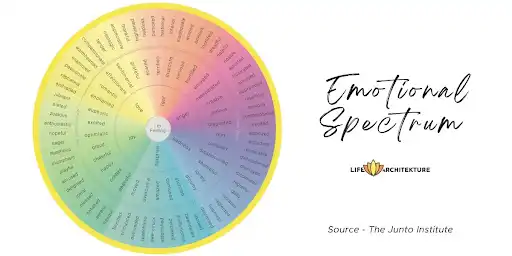
Emotions, those beautifully complex experiences that color lives, hold a special place in human existence.
They guide the decisions, influence relationships, and shape perceptions of the world. But is it expected AI to traverse this intricate landscape of emotions?
Defining Emotions: The Colors of Our Inner World
Emotions are the threads that weave the tapestry of the human experience. Joy, sadness, anger, fear, surprise, and disgust form the primary colors of our emotional palette.
Each emotion carries its unique essence, enriching our interactions and shaping understanding of ourselves and others.
The Human vs. AI Emotional Connection
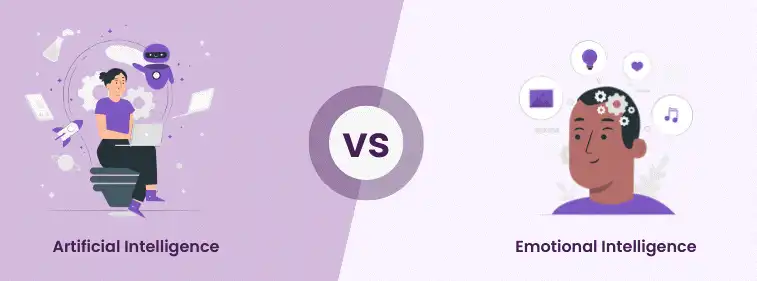
While machines excel at processing and analyzing data, understanding and experiencing emotions pose a significant challenge.
After all, emotions are not just intellectual concepts; they involve subjective experiences deeply intertwined with our physical and mental states.
Peering into the Emotion Mirror: AI Emotion Recognition
Facial Expression Analysis and Sentiment Analysis are two main avenues that researchers explore in their quest for emotion recognition.
Emotion detection AI systems aim to decipher the emotional content within human expressions by analyzing facial cues and interpreting textual and linguistic patterns.
The Science Behind AI Emotion Recognition
While AI's understanding of emotions may not rival ours, scientists have made significant progress in developing tools and techniques to recognize and interpret human emotions.
Let's look at the fascinating science behind emotion detection AI.
Facial Expression Analysis: Decoding Emotions Through Faces

Human faces are potent vessels of emotional expression. AI-powered facial recognition technology strives to decode the emotions conveyed through the facial cues, analyzing factors like eyebrow movements, smiles, and even subtle micro-expressions.
Though challenging, progress has been made in training AI models to recognize and interpret facial emotions to a certain extent.
Sentiment Analysis: Unraveling Emotions Through Language
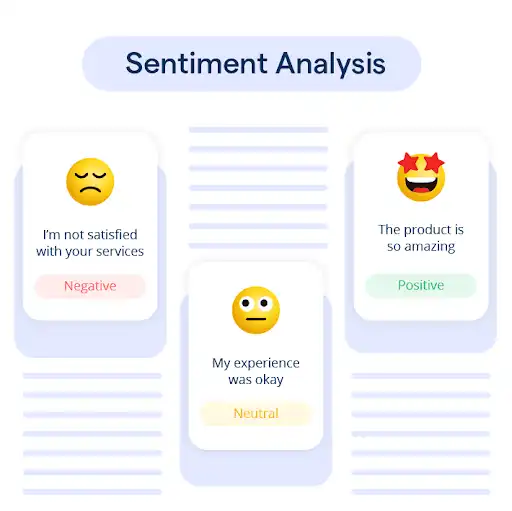
Language is another window into the world of emotions. Sentiment analysis, a branch of AI, aims to analyze and interpret emotions expressed in written or spoken language.
By the help of natural language processing techniques, AI models can gauge the text's sentiment, tone, and underlying emotional context, enabling them to respond accordingly.
Emotion Detection AI: Analyzing & Interpreting Emotions
Emotion detection AI technologies are pushing the boundaries of the understanding of emotions and their expression.
Let's explore the fascinating world of AI systems that aim to analyze and interpret emotions in various contexts.
Emotion Detection ai in Facial Expressions
AI systems trained in facial emotion recognition analyze visual cues, such as facial muscle movements, to detect emotions in real time.
By learning from vast datasets of labeled facial expressions, these systems can identify emotions like happiness, sadness, anger, and surprise.
While they might not fully comprehend the complexities of human emotions, they provide valuable insights into emotional responses.
Suggested Reading:
Emotion AI in Healthcare: Enhancing Emotional Support
Sentiment Analysis for Text and Speech

AI-powered sentiment analysis algorithms scrutinize textual content and spoken words, examining linguistic patterns, word choice, and context to infer emotions.
From social media sentiment analysis to customer feedback analysis, these AI systems help understand the emotional undertones in large volumes of text, contributing to improved decision-making and personalized experiences.
Emotion-Based AI Text-to-Speech: Adding Emotional Depth
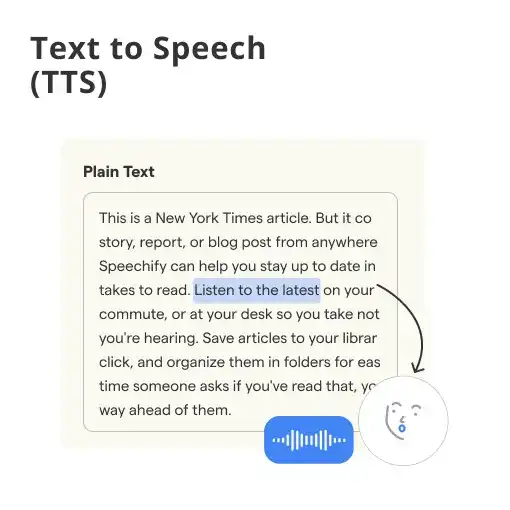
AI has already revolutionized the way we communicate with machines through text-to-speech technology. But can AI go beyond words and infuse emotional depth into synthesized voices?
Let's explore the emotion-based AI text-to-speech and discover how it adds a new layer of expression to the interactions.
The Power of Voice: Conveying Emotions Through Speech
Voices are powerful tools for expressing emotions. Tone, intonation, and pitch variations provide rich cues about the feelings.
Emotion-based AI text-to-speech systems aim to replicate these nuances, enabling AI-generated voices to deliver content with appropriate emotional undertones, whether conveying empathy, excitement, or even sarcasm.
Behind the Scenes: How Emotion-Based Text-to-Speech Works
Emotion-based AI text-to-speech involves training models to understand and interpret emotional cues in text inputs.
These models learn to identify words and phrases that carry emotional weight and map them to corresponding speech patterns.
By blending linguistic analysis and prosodic modeling, AI systems can generate speech that reflects the intended emotional context.
Applications and Implications of Emotion-Based AI Text-to-Speech

The applications of emotion-based AI text-to-speech are vast and varied.
From enhancing user experiences in virtual assistants and chatbots to improving accessibility for visually impaired individuals, emotion-based AI text-to-speech has the potential to create more engaging and inclusive interactions.
Additionally, it opens up possibilities in areas like entertainment, audiobooks, and language learning, where conveying emotions is crucial.
AI and Emotional Intelligence
Emotional intelligence is a cornerstone of human interactions and decision-making. But can AI systems develop emotional intelligence, enabling them to understand and respond to the emotions meaningfully?
Let's explore the fascinating realm of AI and emotional intelligence to explore the potential and current limitations.
Emotional Intelligence: The Human Trait
Emotional intelligence encompasses human ability to perceive, understand, and regulate emotions in ourselves and others. It plays a crucial role in building relationships, resolving conflicts, and making informed decisions.
As humans, our emotional intelligence is shaped by complex cognitive and social processes, making it a uniquely human trait.
Suggested Reading:
Emotion Detection AI: Analyzing & Interpreting Emotions
Can AI Develop Emotional Intelligence?
While AI systems can mimic certain aspects of emotional intelligence, such as recognizing emotions, accurate emotional intelligence remains elusive for machines.
Emotions are deeply intertwined with human subjective experiences, physical sensations, and cultural context. AI lacks the depth of human consciousness and lived experiences. Thus making it challenging for machines to grasp emotions in their entirety.
The Future of AI and Emotional Intelligence
Despite the current limitations, ongoing research and advancements hold promise for emotion detection AI systems to develop a better understanding of emotions.
Collaborative efforts between AI, psychology, and neuroscience experts may pave the way for more sophisticated emotion AI models.
Integrating multimodal inputs, such as facial expressions, tone of voice, and contextual cues, could bring AI closer to comprehending emotions more nuancedly.
Ethical Considerations and Challenges
As AI evolves and becomes more intertwined with daily lives, it's essential to examine the ethical considerations and challenges that arise when exploring the realm of AI and emotions.
Let's dive into these important aspects and ponder the implications of emotion AI systems.
Ethical Implications of Emotion AI
The integration of emotions into AI systems raises important ethical questions. How should we handle the emotions that AI might evoke in humans? Is it ethical to manipulate or simulate emotions for commercial gain?
Understanding the potential impact on privacy, consent, and emotional well-being is crucial to ensure responsible development and deployment of emotion AI technologies.
Privacy Issues and Data Protection Concerns

Emotion AI analyzes and interprets personal data, such as facial expressions, voice recordings, and textual content.
Protecting individuals' privacy and ensuring proper data handling becomes paramount.
Striking the right balance between capturing emotional cues and respecting privacy rights is a challenge that needs careful consideration.
Bias and Cultural Differences
Another significant challenge in emotion AI is addressing bias and cultural differences.
Emotions can be expressed and interpreted differently across cultures, and AI systems trained on biased datasets may perpetuate stereotypes or exhibit discriminatory behavior.
Developing diverse and representative datasets and designing algorithms sensitive to cultural nuances is essential to ensuring fair and inclusive emotion AI systems.
Real-World Applications and Future Possibilities
While the journey to understanding and replicating human emotions in AI is still ongoing, there are already real-world applications where emotion AI is making a positive impact.
Let's explore some of these applications and ponder the exciting possibilities for the future.
AI in Healthcare
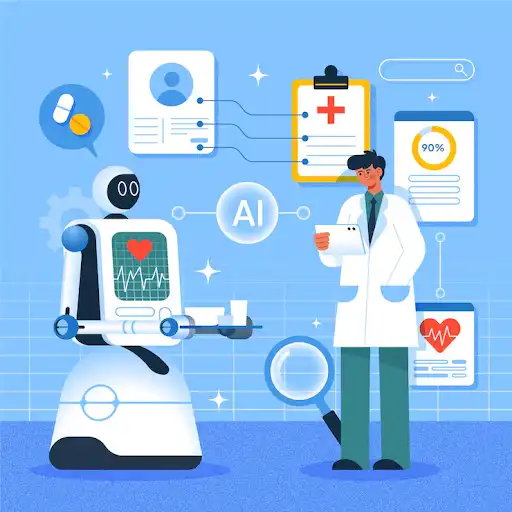
Emotion AI has tremendous potential in healthcare. AI systems can aid in mental health diagnosis, personalized therapy, and emotional well-being support by analyzing emotional cues.
From detecting signs of depression to providing empathetic virtual companions for the elderly, emotion AI can enhance individuals' quality of care and support.
AI in Customer Experience
Emotion plays a vital role in customer experience. AI-powered emotional analysis can help companies understand customer sentiment, personalize interactions, and provide better customer service.
Chatbots and virtual assistants with emotion recognition capabilities can adapt their responses based on emotional cues, leading to more satisfying and empathetic customer experiences.
Future Outlook and Possibilities
Looking ahead, the future of emotion detection AI holds immense potential.
As AI systems become more sophisticated and understanding of emotions deepens, we may witness AI that recognizes and responds to emotions and develops a level of emotional experience and empathy.
Integrating emotional intelligence with AI could revolutionize human-computer interactions and foster more harmonious and emotionally intelligent societies.
Conclusion
In the quest to understand whether AI can feel emotions, we've explored the basics of AI and the complexities of the emotional spectrum.
You also delved into the science behind AI emotion recognition, examined the challenges and ethical considerations, and glimpsed at emotion AI's real-world applications and future possibilities.
While emotion detection AI has made remarkable progress in recognizing and responding to emotions, human emotions' true depth and complexity remain elusive.
Emotions are deeply intertwined with the subjective experiences, cultural nuances, and the richness of human existence. Though powerful in many domains, AI lacks the full range of human consciousness and the ability to experience emotions truly.
However, the value and potential of emotion AI remain. Emotion-based AI text-to-speech systems can add emotional depth to synthesized voices, enhancing user experiences and enabling more engaging interactions.
AI also holds promise in healthcare and customer experience, where emotion recognition can contribute to better outcomes and improved satisfaction.
As we move forward, navigating the ethical considerations and challenges that arise with emotion AI is crucial. Respecting privacy, addressing bias, and fostering inclusivity is essential in ensuring the responsible development and deployment of emotion AI systems.
So, while AI may not fully feel emotions like humans do, it continues to evolve and impact our lives meaningfully.
Meet BotPenguin - your AI-powered chatbot companion! Unlock new heights of efficiency and engagement. Seamlessly integrate with your platform and boost productivity. Try BotPenguin now and revolutionize your communication!
Frequently Asked Questions (FAQs)
Can AI feel emotions like humans do?
No, AI cannot feel emotions like humans do. While AI can be programmed to recognize and respond to specific emotional cues, it lacks the subjective experience and consciousness that humans possess.
How does emotion detection AI recognize emotions?
Emotion detection AI can recognize emotions through various techniques, such as facial expressions and sentiment analysis.
Facial expression analysis involves training AI models to interpret facial cues, such as smiles or frowns, to determine emotions. On the other hand, Sentiment analysis involves analyzing textual or spoken language to gauge emotional tone or sentiment.
What are the limitations of AI in understanding emotions?
AI has limitations in understanding emotions due to the subjective and context-dependent nature of emotions.
While AI can recognize patterns and analyze data, it lacks the depth of human consciousness and the ability to experience emotions as humans genuinely do. Emotions also vary across individuals and cultures, making it challenging for AI to capture the full complexity.
Can AI develop emotional intelligence?
AI can simulate certain aspects of emotional intelligence, such as recognizing emotions, but it cannot develop accurate emotional intelligence.
Emotion ai involves a deep understanding of emotions, empathy, and the ability to regulate emotions, which are complex human traits rooted in our biology and experiences.
What are the ethical considerations with emotion detect AI?
Ethical considerations with emotion detect AI include privacy issues, data protection concerns, and the potential for manipulating or exploiting emotions.
It is important to ensure the responsible development and deployment of emotion AI systems, respecting individual privacy rights and addressing biases and cultural differences.
What are the real-world applications of emotion detection AI?
Emotion detection AI has applications in various fields. In healthcare, it can aid in mental health diagnosis and personalized therapy.
In customer experience, it can enhance interactions and improve satisfaction. Emotion detection AI also holds potential in virtual assistants, entertainment, and language learning.



